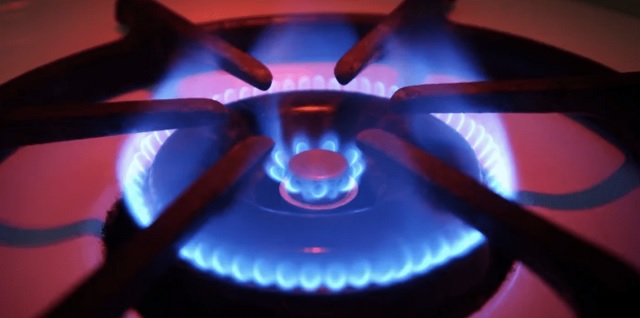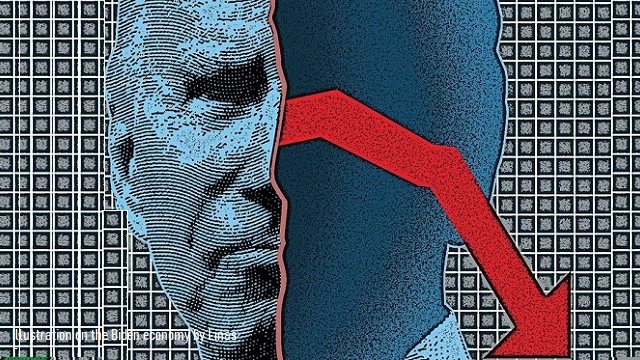A few weeks ago, US Secretary of the Treasury Janet Yellen appeared on the Late Show With Stephen Colbert to discuss a range of issues both political and personal.
The most widely reported moment in the interview came when Yellen talked about practicing her signature (don’t ask me why this is newsworthy, I have no idea). However, a significantly more important moment has not gotten the attention it deserves.
When asked by Colbert to explain the reasons behind the worst inflation the US has experienced in 40 years, the former Federal Reserve chair blamed it primarily on rising consumer spending—Americans “splurging” on goods—at the start of 2021 once the Covid-19 lockdowns were lifted. This, compounded with supply chain issues and the war in Ukraine can sufficiently explain inflation, Yellen claims.
But can it really? Let’s take a closer look.
The Real Reason For Inflation
Yellen’s explanation is not wholly inaccurate; it is true that consumer spending rose above pre-pandemic levels at the start of 2021 and continued to rise at a notably fast rate for many subsequent months—which puts upward pressure on prices. At the same time, this is in no way a complete explanation of the inflation we are seeing now.
Yellen’s explanation does not capture inflation’s primary culprit, both in this case and historically: expansionary monetary policy. From February 2020 to February 2021, the money supply as measured by M2 (the broadest measure of the money supply) increased by 27 percent. It increased by another 11 percent from February 2021 to February 2022. This means that, over the first two years of the Covid pandemic, the money supply increased by 41 percent. To put that in perspective, from 2010 to 2019, this measure of the money supply rose by 5.8 percent annually.
In a 60 Minutes interview, Chairman of the Federal Reserve Jerome Powell replied “Yes, we did,” when asked if he simply “flooded the system with money” during the pandemic.
The consequence of such a drastic rise in the money supply is clear: a drastic rise in inflation.
The Evidence
The reason this is the case should be intuitive (increasing the amount of money in the economy boosts the relative demand for goods and services, which puts upward pressure on prices) but it can also be demonstrated theoretically and examined empirically using what is known as the quantity theory of money. This theory has roots that can be traced back hundreds of years but remains as relevant as ever today, with most economists accepting its core insight as accurate.
The quantity theory of money is based on the “equation of exchange”: MV=PY, where M is the quantity of money, V is the velocity of money (the average frequency at which a unit of money is used to purchase goods during a given period), P is the average price level, and Y is real GDP.
If the value of one side of the equation rises or falls, there must be a similar shift on the other side. Based on this, we can understand that there is a positive relationship between money supply and price level, all other variables held constant.
This is particularly true if we accept that a nominal variable such as money cannot influence a real variable like GDP (Y); it would mean that the entire impact of a rising money supply falls on price level, rather than price level and real GDP).
In the context of the economic developments since February 2020, it becomes clear why we now see inflation. M rose dramatically for a two year period; however, it initially did not cause a hike in the left side of the equation (MV) because of a decline in V at the start of the pandemic. But once V inevitably adjusted back to baseline as restrictions were lifted, MV rose and an increase in the left side of the equation (PY) was necessary in order for the identity to hold. The spike in price level (inflation) following a rapid rise in the money supply and a return of other variables to their baseline could have easily been predicted using this theory and equation.
Put simply, as the supply of any good, including money, increases, the value of that good will fall relative to the value of other goods. In other words, creating more money means money will have a lower purchasing power than if the money was not created.
That this is the proper explanation for inflation, and that the quantity theory of money remains valid, is borne out empirically. The graph below—created by two economists at Johns Hopkins University and presented in the Wall Street Journal—shows expected inflation based on the quantity theory of money equation (MV=PY) plotted next to actual inflation as measured by the GDP deflator over the past 60 years. The extent to which the two track is striking. The only deviation from the relationship took place at the start of the Covid-19 pandemic; but, by the middle of 2021, the equation of exchange was once again a near perfect predictor of inflation. This suggests that the quantity theory of money certainly reflects the real world workings of the economy in that price level is heavily influenced by money supply. It thus vindicates the proposition that the Federal Reserve’s expansionary monetary policy is the primary reason for inflation.
As a final note, it should be mentioned that all of this was exacerbated by expansionary fiscal policy. At the same time that the money supply was increasing, politicians in Congress passed several stimulus bills—nearly all of them topping a trillion dollars.
Astonishingly, these bills did not stop when inflation began. In March 2021, Democrats passed, and Joe Biden signed, the $1.9 trillion American Rescue plan which sent billions of dollars in direct stimulus checks. Then, in August 2022 the so-called Inflation Reduction Act was passed, which added more than $500 billion in new spending and tax breaks. Insofar as an increasing money supply enables increasing government spending, it puts upward pressure on prices, which means the inflation we see today really was a team effort between the Federal Reserve and Congress.
The Art of Shifting Blame
It should be self-evident that the explanation given above for inflation is not one that the people in charge of monetary and fiscal policy would be happy with. The reason is simple: it suggests they are culpable for the inflation we have experienced.
The first response was that it was merely “transitory.” Jerome Powell claimed, in March 2021, that “these [are] one-time increases in prices.” Yellen concurred saying, “I really doubt that we’re going to see an inflationary cycle.” Former White House Press Secretary Jen Psaki told reporters that inflation was only going to have “a temporary, transitory impact.”
All of these claims turned out to be completely untrue, as even those who pushed that idea at the start have now recognized.
Then, politicians including, but not limited to, Senators Elizabeth Warren and Bernie Sanders jumped on the idea that “corporate greed” was the real reason inflation was rising. As Brad Polumbo points out, though, the issue with this talking point is twofold: 1) “corporations are no more ‘greedy,’ aka profit-seeking, than they were 5 years ago or 10 years ago, when inflation wasn’t surging” and 2) producer prices have risen more than consumer prices, suggesting “companies haven’t jacked up prices to even fully match the increase in their costs, let alone exceed them.”
The “greedflation” argument amounts to nothing more than a politically-motivated conspiracy theory.
The White House has also taken advantage of Russia’s war on Ukraine to dub inflation “Putin’s price hike.” Nevermind the fact that inflation — including gas prices — were already up prior to Russia’s invasion, plenty of people went along with this line of argument anyway. This supply shock caused by the war would also be accounted for in the real GDP term of the equation of exchange. Since real output hasn’t yet fallen significantly in the US, it’s unlikely that this is the primary cause of inflation. It is true that the invasion has made inflation worse, but it is certainly not the cause of inflation.
And now, with Yellen’s recent interview, it seems that the narrative has shifted once again—to blaming inflation on Americans for spending too much.
There is a pattern here: no matter what happens, technocrats, bureaucrats, and politicians find a way to blame everything and everyone—except for their own policies and actions—for the situations we find ourselves in. This is true regarding inflation; this is true regarding school closures and subsequent learning loss; this is true regarding failed Covid-19 lockdowns.
Milton Friedman’s Warning
Nobel Prize winning economist Milton Friedman could have (and did) predict this precise sequence of events almost 50 years ago.
He said that “If you listen to people in Washington (…) they will tell you that inflation is produced by greedy businessmen or it’s produced by grasping unions or it’s produced by spendthrift consumers.”
As we have seen, this is certainly still the case today. However, Friedman points out that the core issue with those ideas is that “neither the businessman, nor the trade union, nor the [consumer] has a printing press in their basement on which they can turn out those green pieces of paper we call money.”
So, what is the cause of inflation? Friedman argues: “Inflation is always and everywhere a monetary phenomenon, in the sense that it is and can be produced only by a more rapid increase in the quantity of money than in output.”
There is no better description of the period between February 2020 and February 2022. The government first shut down production during lockdowns—with residual effects being felt for a substantial period of time afterward due to the friction inherent in our economy—while simultaneously increasing the money supply at staggering rates.
The question we should be asking those in charge is simple: what other outcome could there have been other than rising inflation?
*****
This article was published by FEE and is reproduced with permission.







![The Federal Reserve’s Housing Market Lessons to Be Learned [Once Again] thumbnail](https://drrichswier.com/wp-content/uploads/federal-reserve-e1673037056657.jpg)


